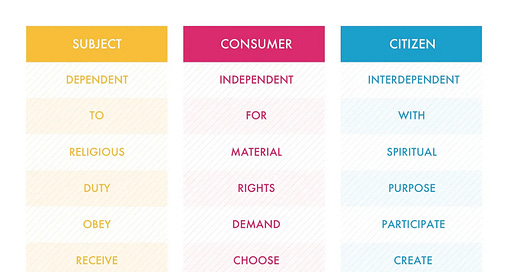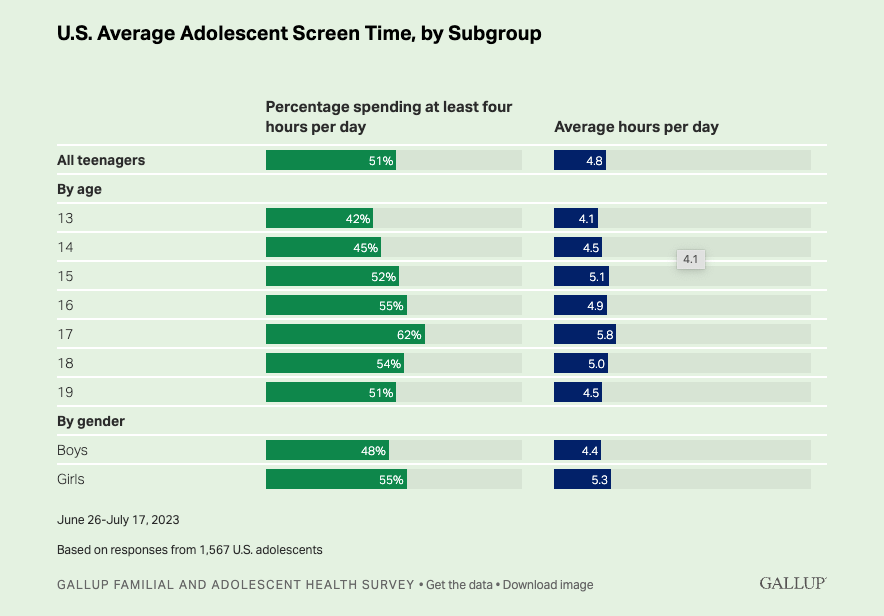Discipline and Control
Gavin Mueller | Will Citizenry Save Work? | Factoids | Elsewhere Elsewhen
Quote of the Moment
Scientific management, for all its pretensions, was less about determining ideal working methods and more about shattering this tremendous source of worker power. By breaking apart each work process into carefully scrutinized component tasks, Taylor had cracked the secret of labor’s advantage, thereby giving management complete mastery over the productive process. The modernizing terminology of “science” and “efficiency” masked the prerogatives of discipline and control of workers. In political economist Harry Braverman’s estimation, "Taylor raised control to an entirely new plane when he asserted as an absolute necessity of adequate management the dictation to the worker of the precise manner in which work is to be performed".
| Gavin Mueller, Breaking Things at Work
Will Citizenry Save Work?
Adam Curry is one of a short list of writers whose work I aspire to read religiously. So when he digs into some other writer’s work, I pay attention.
In a recent post, 6 March 2024. Hope | Brains, he writes about Jon Alexander, who ‘wrote the book Citizens back in 2022, has been on a bit of a quest this year. As a result of the book, he has been around the world talking to citizens—usually activist citizens—“from Grimsby to Auckland and back again”, as he puts it’.
I haven’t read Citizens, or heard about Jon Alexander before. Curry details Alexander’s travels, but it wasn’t until 20 paragraphs in that I encountered a chart that sets the context for the earlier 20 paragraphs. This chart:
Curry sets context:
Part of the failure of our political systems is also down to a failure of the consumer story.
The Consumer Story holds that our role as individuals is to pursue self interest, choosing the best option for us from those that are offered... The most dangerous implication of the Consumer Story is that we can expect no better of each other than this.
Authoritarians offer to replace this with a story about being a subject: if we put them in power, they will fix things for us (although they don’t, of course).
The foreword of Alexander’s Citizens was written by the polymath, Brian Eno, and he explains the three columns in the chart in this way, as narratives:
The two dominant narratives today are China - a Subject state with centralised power and deep surveillance - and Siliconia - a Consumer state with centralised power and deep surveillance. Neither offers a credible path to a sustainable, equitable, beautiful world.
That’s the bad news.
[…]
The future won’t be dominated by either of the two narratives currently under discussion, but by what this book calls The Citizen Story.
The Citizen Story is about the empowerment of us all to co-invent and nurture our own futures. The Citizenship of this book is not about the passport we hold, and it goes far beyond the duty to vote in elections. It’s a state of engagement, more verb than noun. We look around, identify the domains where we have some influence, and we roll up our sleeves and make things happen.
Eno and Alexander argue that the only viable path for the world is a grassroots movement that rejects the two dominant narratives — Subject and Consumer narratives — and begins the third narrative of Citizenry.
As Eno states:
It’s the critical moment, for social revolutions happen in two phases. The first is when everybody realises the current system isn’t working any longer. The second is when everybody realises that everybody else has realised it too. Then the coalescence begins - the movement gels. The vast majority of people realise they’re on the same side. The people come together, and there’s no stopping them.
Let’s say I believe this is that critical point. Now what? Eno lays it out:
The Citizen Story is about the empowerment of us all to co-invent and nurture our own futures. The Citizenship of this book is not about the passport we hold, and it goes far beyond the duty to vote in elections. It’s a state of engagement, more verb than noun. We look around, identify the domains where we have some influence, and we roll up our sleeves and make things happen.
Can the world of work be one of those domains?
The conservative work ethic [to use Elizabeth Anderson’s term] bridges from the Subject narrative of management to the Customer narrative of the managed. For example, management wants workers to obey management out of a sense of duty, while the contemporary stance of the managed is to assert their rights (not just accept management’s idea of duties) and to make demands on management, instead.
The third narrative — the Citizen, or in my terms, emergent narrative — sounds a great deal like the more progressive thinking about what work could be. An emergent organization places purpose over duty or even rights.
I believe a similar leveling up can line up for all the elements of the narratives, such as hierarchy → bureaucracy → network. I will leave that as an exercise for you, gentle reader.
However, the critical point is to take what Alexander and Eno preach. We are at that critical point, and groups of citizens are discussing how the old narratives are not enough, and where they realize that everybody else has realized it too.
So, will we see a shift beyond the unrealized demands for a more democratic workplace and instead jump ahead to an openly post-capitalist theory of business, where a company must stand for more than making money for shareholders and a precarious living for the managed?
If Alexander and Eno are right, it has to happen, and soon.
Factoids
In 2023, the US alone had more than two million management consultants and almost 115,000 business professors. | Bloomberg.
All those people giving advice, but work is still a battle zone.
…
A 2015 Dutch study estimated that more than 10 percent of cognitively normal 50-year-olds would test positive [for Alzheimer's], as would almost 16 percent of 60-year-olds and 23 percent of 70-year-olds. Most of those individuals would never develop dementia. | Paula Span
Apparently, there is a drug under development that can counter symptoms of Alzheimers.
…
2020 report found tyre dust contributes 78% of the total mass of microplastics. | Reuters
And EVs 'can wear out tires up to 50% faster than conventional cars'.
…
Under reasonable assumptions, and at current prices, making this class of drugs ['GLP-1 receptor agonists' like Ozempik and Wegovy] available to all obese Americans could eventually cost over $1 trillion per year. That exceeds the savings to the government from reduced diabetes incidence and other health care costs from excess weight by $800 billion annually.
This is a staggering sum. It is almost as much as the government spends on the entire Medicare program, and almost one-fifth of the entire amount America spends on health care. | The Miracle Weight-Loss Drug Is Also a Major Budgetary Threat
Note: Ozempik costs 10X in the US what it does in Britain, Australia or France.
…
17-year-olds in the US spend 5.8 hours per day on social media. | Gallup
…
Motor vehicle insurance rose 1.4 percent on a monthly basis in January alone and has risen 20.6 percent over the past year, the largest jump since 1976. It has been a huge hit for those driving the roughly 272 million private and commercial vehicles registered in the country. And it has played a part in dampening the “mission accomplished” mood on inflation that was bubbling up in markets at the beginning of the year.
According to a recent private-sector estimate, the average annual premium for full-coverage car insurance in 2024 is $2,543, compared with $2,014 in 2023 and $1,771 in 2022. | Talmon Joseph Smith
This is hitting everyone in the pocket book. Bad for Biden.
Elsewhere and Elsewhen
Elsewhere
Adrian Woolridge, at Bloomberg, mounts a teardown of the business consultant/guru complex, and provided the first factoid above. Here’s the flavor of his scathing critique claiming that there’s no new ideas out there:
Why is so much “input” (all those professors and consultants) leading to so little “output”? Part of the answer lies in the maturity of the industry. There are only so many ideas that you can have about managing people or resources, and many of the best were generated long ago. Two management thinkers — Gary Hamel and Michele Zanini — have produced an “S” curve diagram of management innovation (based on research conducted with Julian Birkinshaw of London Business School). It takes off slowly in the 1880s with scientific management, profit sharing and R&D labs, accelerates from the 1920s to the 2000, and then flattens out.
Keep reading with a 7-day free trial
Subscribe to Work Futures to keep reading this post and get 7 days of free access to the full post archives.





